In a homily at the pilgrimage site of St. Anna Schäffer in Mindelstetten, Bishop Rudolf Voderholzer of Regensburg addressed the recently released statistics regarding church attendance and such in the Catholic Church in Germany. He compares them to the equally disastrous numbers in the Lutheran church and explains that the standard liberal remedies of constantly wanting to change church and faith, and getting rid of perceived oppressive dogmas, is not the solution to the crisis.
According to Bishop Voderholzer, the numbers point out something else: an evaporation of faith. He also puts this into perspective, saying that the Lord never promised his followers to be a majority anywhere. Rather, he foresaw difficulties and opposition. So, depressing numbers should, in themselves, really not be a cause for us to give up.
 “Dear sisters and brothers in the Lord!
“Dear sisters and brothers in the Lord!
Last Friday, the 21st of July, the statistics for the Catholic Churc and the Lutheran Church in Germany for the year 2016 were published. You will probably have heard a few things about it via radio and television or in the newspaper.
The outcome was not very surprising. Like before, the number of people leaving the Church are disconcertingly high, even when they have dropped by some 11 percent in the Catholic Church as compared to 2015. The number of baptisms has increased slightly, the number of marriages decreased soewhat. In Hamburg and Berlin the number of Catholics has grown, due to the influx of Catholic foreigners; but in general the number of Catholics is growing smaller.
Dear sisters and brothers, I do not want to bore you with numbers and statictics today, on the Anna Schäffer Day of Remembrance. But the public reactions to these numbers are noteworthy and lead us to look further.
As a remedy to turn these trends around and to preserve our social relevance we are continuously advised to – literally – “open up and rid ourselves of rigid conservative dogmas.”
In this case, these are:
Abolishing the celibacy of priests;
Removing the different tasks and appointments of men and women in the Church and admitting women into apostolic ministry;
Consenting to the demand of full legal equality of same-sex partnerships with marriage;
Admitting everyone to Communion, and so on.
You know the list of demands as well as I do.
Dear sisters and brothers! The problematic nature of this advice becomes clear with a quick glance at the statistics of the Lutheran church. If the application of the aforementioned pieces of advice would really be a way of improving the situation of the Church, flourishing life must be visible in the Lutheran church.
But what do the numbers say? More people leave the Lutheran church – and have done so, with the exception of 2014, for years – than the Catholic Church, despite the fact that in the Lutheran church these demands have all basically been fulfilled and all these alleged impediments to being church are no longer present. But this is generally ignored in public, even though the numbers were presented on the same day. Isn’t the reason that this is being ignored perhaps that it would reveal the blatant weakness, yes, the inconsistency and absurdity of this “good” advice to the Catholic Church?! Can one, in all seriousness, present the path of the Lutheran church as a remedy, when it is so often led to an even greater distance to the faith and the church? I say this without malice! I know Lutheran fellow Christians who completely agree with my assessment and who warn us Catholics not to make the same mistakes.
We must look much further in the whole debate. The statictics reveal a secularisation which has been progressing for years, a loss of church affiliation and lastly a decline in the substance of faith, an evaporation of the awareness of God. That is why we do not really have a shortage of priests, but a much more fundamental shortage of faith. The priest shortage is a symptom, like a fever. But the fever is not itself the disease, but it indicates the presence of an inflammation. I am certain: the fever of the priest shortage indicates the disease of lack of faith. As an aside, the Lutheran church has also long known the phantom of lack of priests, as there are too few young people who study theology and are willing to also put themselves professionally at the service of the Gospel; all this without celibacy and with the possibility for women to also assume the office of the priesthood! This should give us a sense of the true reasons for the lack of church adherence.
Dear sisters and brothers, come together at the grave of Saint Anna Schäffer! We all have the image and the fate of the Church at heart. But not in the sense that we belong to her as to a club whose public image and strength are the ultimate goal; but for the sake of the message and the sake of the people, for whose sake God became man in Jesus Christ. In the Church He takes us into service for His Gospel. The Lord did not promise us that we would always be the majority; rather, He predicted headwind and resistance.
For that reason we should not concern ourselves too much with numbers and statistics. What should concern us is that the Gospel can lighten up our environment, through our lives in faith. Everywhere where we overshadow the Gospel because of inattentiveness, lovelessness and hard-heartedness, we are called to convert and once more give the Lord space.
Instead of constantly changing the structures, also and especially the sacramental structures of the Church, instead of diluting the message of the Gospel and instead of proclaiming a light version of Jesus, evangelisation is called for, a saturation of society with the Spirit of Jesus. And the first and all-important step on that way is a daily striving towards holiness, the daily listening to God’s word and the willingness to begin the reform of the Church with myself. That is reformation: the renewal of faith, the restoration of the image of Christ which was engraved in us in Baptism and Confirmation. Where this is granted to us in God’s mercy, where we succeed in this, we will make the people of our time once again curious about the faith which supports us. And then we can also explain the hope that lives within us.
Dear sisters and brothers in the Lord! In the endeavours of evangelisation in our time Saint Anna Schäffer is in every aspect an example and also an advocate.
She wanted to devote her life to the mission abroad. But the Lord had destined her for the mission in her own country. Before becoming a comforter and source of joy in faith for many, she had to allow herself to be evangelised again, and radically so. Accepting her suffering as a partaking in the cross of Christ was anything but easy. Bedridden and with her gaze upon the cross she faced this process of inner healing and transformation. She so became a bright sign of God’s work, a messenger of faith to countless people and ultimately a saint of the Catholic Church.
And so we pray today for her intercession, that the Lord will grant each and everyone of us the grace to begin the reform of the Church in ourselves; that we muster the courage to lt ourselves be evangelised anew every day and in this way be prepared to serve the mission of the Church – for the salvation of humanity and the glory of the triune God, whose is the glory, today, every day and forever. Amen.”
 A third auxiliary bishop for the German Diocese of Rottenburg-Stuttgart was appointed today. 50-year-old Msgr. Gerhard Schneider joins Auxiliary Bishops Thomas Renz and Matthaus Karrer, and ordinary Bishop Gebhard Fürst at the head of the diocese which covers the central and eastern parts of the state of Baden-Württemberg.
A third auxiliary bishop for the German Diocese of Rottenburg-Stuttgart was appointed today. 50-year-old Msgr. Gerhard Schneider joins Auxiliary Bishops Thomas Renz and Matthaus Karrer, and ordinary Bishop Gebhard Fürst at the head of the diocese which covers the central and eastern parts of the state of Baden-Württemberg. “Dear sisters and brothers in the Lord!
“Dear sisters and brothers in the Lord! Bishop-elect Horst Eberlein was born in 1950 in Walsleben (Altmark) and ordained to the priesthood in 1977. He was a priest in parishes in what was then the Apostolic Administration of Schwerin, which in 1994 became a part of the newly erected Archdiocese of Hamburg. He is then the first bishop to be appointed from among the clergy of Hamburg itself. His predecessors as auxiliary bishops came from Schwerin (Norbert Werbs) and Osnabrück (Hans-Jochen Jaschke), and the archbishops were also called from other circumscriptions. Archbishop Heße, for example, came from Cologne.
Bishop-elect Horst Eberlein was born in 1950 in Walsleben (Altmark) and ordained to the priesthood in 1977. He was a priest in parishes in what was then the Apostolic Administration of Schwerin, which in 1994 became a part of the newly erected Archdiocese of Hamburg. He is then the first bishop to be appointed from among the clergy of Hamburg itself. His predecessors as auxiliary bishops came from Schwerin (Norbert Werbs) and Osnabrück (Hans-Jochen Jaschke), and the archbishops were also called from other circumscriptions. Archbishop Heße, for example, came from Cologne.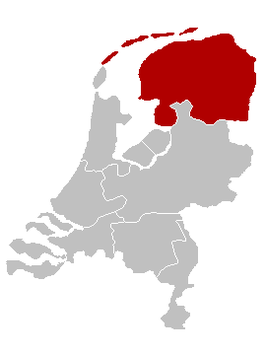 There have been years when the changes were rather significant, but 2017 does not look to be one of those. At the start of the new year, three dioceses are without a bishop: Groningen-Leeuwarden in the Netherlands (map at right), Mainz in Germany and the Territorial Prelature of Trondheim in Norway. It is a safe bet that the first two will receive their new bishops in 2017, but Trondheim may well be left as it has been for the past seven years: without a bishop, and with the bishop of Oslo serving as Apostolic Administrator. But on the other hand, for a see that just built and consecrated its new cathedral, and which, like the rest of Norway, has seen a significant increase in Catholic faithful, this does not seem like a situation that will continue forever. So who knows what the year will bring.
There have been years when the changes were rather significant, but 2017 does not look to be one of those. At the start of the new year, three dioceses are without a bishop: Groningen-Leeuwarden in the Netherlands (map at right), Mainz in Germany and the Territorial Prelature of Trondheim in Norway. It is a safe bet that the first two will receive their new bishops in 2017, but Trondheim may well be left as it has been for the past seven years: without a bishop, and with the bishop of Oslo serving as Apostolic Administrator. But on the other hand, for a see that just built and consecrated its new cathedral, and which, like the rest of Norway, has seen a significant increase in Catholic faithful, this does not seem like a situation that will continue forever. So who knows what the year will bring. There are a few bishops who will reach the age of 75 in 2017, and thus will offer their resignation. In Germany, these are Bishop Friedhelm Hofmann of Würzburg on 12 May and Norbert Trelle (at left) of Hildesheim on 5 September. Joining them is Bishop Frans Wiertz of Roermond in the Netherlands. He will be 75 on 2 December, but I would not be surprised if his retirement will be accepted earlier, as the bishop has been struggling with eye-related health problems.
There are a few bishops who will reach the age of 75 in 2017, and thus will offer their resignation. In Germany, these are Bishop Friedhelm Hofmann of Würzburg on 12 May and Norbert Trelle (at left) of Hildesheim on 5 September. Joining them is Bishop Frans Wiertz of Roermond in the Netherlands. He will be 75 on 2 December, but I would not be surprised if his retirement will be accepted earlier, as the bishop has been struggling with eye-related health problems.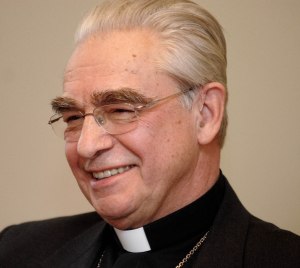 In Rome, lastly, there will be no new consistory. Only four cardinals will reach the age of 80 and so cease to be electors. They are Audrys Backis, Archbishop emeritus of Vilnius, Lithuania (and former Nuncio to the Netherlands) (at right); Raymundo Damasceno Assis, Archbishop emeritus of Aparecida, Brazil; Attilio Nicora, Pontifical Legate to the Basilicas in Assisi, Italy; and Lluís Martínez Sistach, Archbishop emeritus of Barcelona, Spain. The number of cardinals who will be able to participate in a conclave will still be 116 at the end of next year, so there will be no need to bring their numbers up.
In Rome, lastly, there will be no new consistory. Only four cardinals will reach the age of 80 and so cease to be electors. They are Audrys Backis, Archbishop emeritus of Vilnius, Lithuania (and former Nuncio to the Netherlands) (at right); Raymundo Damasceno Assis, Archbishop emeritus of Aparecida, Brazil; Attilio Nicora, Pontifical Legate to the Basilicas in Assisi, Italy; and Lluís Martínez Sistach, Archbishop emeritus of Barcelona, Spain. The number of cardinals who will be able to participate in a conclave will still be 116 at the end of next year, so there will be no need to bring their numbers up. The Catholic Church in Germany has published its annual
The Catholic Church in Germany has published its annual  In the Archdiocese of Hamburg the tradition is about to change. Hamburg is perhaps a little too young to have very old traditions, but this goes a bit further back than the archdiocese. Established in 1994, the archdiocese was given two auxiliary bishops, one residing in Hamburg, the other in Schwerin. And in Schwerin, the tradition of having a resident auxiliary bishop goes back another 40 years, to 1973, when the area, then still part of the Diocese of Osnabrück, was made a nominally separate Apostolic Administration. This because of the political situation at the time: the new Administration was that part of Osnabrück which lay in the communist German Democratic Republic, divided from the rest of the diocese by the iron curtain. As this border between west and east prevented easy travel by the bishop from Osnabrück to the faithful in Mecklenburg and Vorpommern, the Holy See appointed an auxiliary bishop to reside in Schwerin, who could be a bishop for the faithful there when the ordinary could not. After the German reunification, major parts of Osnabrück, including Schwerin, were split off to become the new Archdiocese of Hamburg, but the auxiliary bishop in Schwerin remained, now as an auxiliary bishop of Hamburg. Since 1981, that has been Bishop Norbert Werbs, who
In the Archdiocese of Hamburg the tradition is about to change. Hamburg is perhaps a little too young to have very old traditions, but this goes a bit further back than the archdiocese. Established in 1994, the archdiocese was given two auxiliary bishops, one residing in Hamburg, the other in Schwerin. And in Schwerin, the tradition of having a resident auxiliary bishop goes back another 40 years, to 1973, when the area, then still part of the Diocese of Osnabrück, was made a nominally separate Apostolic Administration. This because of the political situation at the time: the new Administration was that part of Osnabrück which lay in the communist German Democratic Republic, divided from the rest of the diocese by the iron curtain. As this border between west and east prevented easy travel by the bishop from Osnabrück to the faithful in Mecklenburg and Vorpommern, the Holy See appointed an auxiliary bishop to reside in Schwerin, who could be a bishop for the faithful there when the ordinary could not. After the German reunification, major parts of Osnabrück, including Schwerin, were split off to become the new Archdiocese of Hamburg, but the auxiliary bishop in Schwerin remained, now as an auxiliary bishop of Hamburg. Since 1981, that has been Bishop Norbert Werbs, who 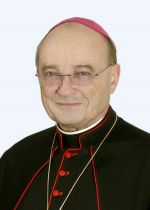 A spokesman of the archdiocese
A spokesman of the archdiocese  In the Netherlands, to begin with, a new bishop will arrive in the Diocese of ‘s-Hertogenbosch. Bishop Antoon Hurkmans (right) has already has his resignation on health grounds accepted and it shouldn’t take more than a few more months for his successor in the country’s largest diocese (in numbers at least) to be named. Will it be current Auxiliary Bishop Rob Mutsaerts? Who’s to say.
In the Netherlands, to begin with, a new bishop will arrive in the Diocese of ‘s-Hertogenbosch. Bishop Antoon Hurkmans (right) has already has his resignation on health grounds accepted and it shouldn’t take more than a few more months for his successor in the country’s largest diocese (in numbers at least) to be named. Will it be current Auxiliary Bishop Rob Mutsaerts? Who’s to say. In Germany, three prelates are expected to retire this year. First of all the long-serving Bishop of Mainz, Cardinal Karl Lehmann (left), who will reach the age of 80 in May. Losing his voting rights in the conclave and his memberships in the Curia, his retirement is expected to follow around the same time. The Diocese has already announced that Cardinal Lehmann will continue to live in his current home, while the former abode of Cardinal Volk, bishop of Mainz from 1962 to 1982. Cardinal Lehmann has headed Mainz since 1983.
In Germany, three prelates are expected to retire this year. First of all the long-serving Bishop of Mainz, Cardinal Karl Lehmann (left), who will reach the age of 80 in May. Losing his voting rights in the conclave and his memberships in the Curia, his retirement is expected to follow around the same time. The Diocese has already announced that Cardinal Lehmann will continue to live in his current home, while the former abode of Cardinal Volk, bishop of Mainz from 1962 to 1982. Cardinal Lehmann has headed Mainz since 1983. In Limburg we may finally expect the arrival of a new bishop. Administrator Bishop Manfred Grothe (right) will be 77 in April and has already retired as auxiliary bishop of Paderborn. In March, it will be two years since Bishop Tebartz-van Elst was made to retire, and according to Bishop Grothe, the time is just about ready for his successor to be named.
In Limburg we may finally expect the arrival of a new bishop. Administrator Bishop Manfred Grothe (right) will be 77 in April and has already retired as auxiliary bishop of Paderborn. In March, it will be two years since Bishop Tebartz-van Elst was made to retire, and according to Bishop Grothe, the time is just about ready for his successor to be named. In the Archdiocese of Hamburg, the last auxiliary bishop, Hans-Jochen Jaschke (left) will reach the age of 75 in September. This may mean that Archbishop Stefan Heße will be requesting one or more new auxiliary bishops from Rome, either this or next year.
In the Archdiocese of Hamburg, the last auxiliary bishop, Hans-Jochen Jaschke (left) will reach the age of 75 in September. This may mean that Archbishop Stefan Heße will be requesting one or more new auxiliary bishops from Rome, either this or next year. In Belgium then, Ghent’s Bishop Luc Van Looy (right) will turn 75 in September. The Salesian, who became president of Caritas Europe and was among Pope Francis’ personal choices to attend the Synod of Bishops last year, has been bishop of Ghent since 2003.
In Belgium then, Ghent’s Bishop Luc Van Looy (right) will turn 75 in September. The Salesian, who became president of Caritas Europe and was among Pope Francis’ personal choices to attend the Synod of Bishops last year, has been bishop of Ghent since 2003. In Rome, another Belgian bishop will reach the retirement age in April, Archbishop Frans Daneels (left), secretary of the Apostolic Signatura and a Norbertine priest, may return to Averbode Abbey in Belgium, where he made his profession in 1961.
In Rome, another Belgian bishop will reach the retirement age in April, Archbishop Frans Daneels (left), secretary of the Apostolic Signatura and a Norbertine priest, may return to Averbode Abbey in Belgium, where he made his profession in 1961.
 On the feast of the two foster fathers of the Church, Saints Peter and Paul, it’s also Pallium day. The new metropolitan archbishops come to Rome to receive the sign of their union with the Holy Father and take it back home to their provinces. But this time around we’ll see the introduction of the new form of the ceremony. While the archbishops still receive their pallia from the Pope, the official act of imposition will take place in their respective cathedrals, and it will be the Apostolic Nuncio, the official representative of the Pope, who will do the honours. This to emphasise the home churches over Rome, although most archbishops still travel to Rome to concelebrate today’s Mass with the Holy Father.
On the feast of the two foster fathers of the Church, Saints Peter and Paul, it’s also Pallium day. The new metropolitan archbishops come to Rome to receive the sign of their union with the Holy Father and take it back home to their provinces. But this time around we’ll see the introduction of the new form of the ceremony. While the archbishops still receive their pallia from the Pope, the official act of imposition will take place in their respective cathedrals, and it will be the Apostolic Nuncio, the official representative of the Pope, who will do the honours. This to emphasise the home churches over Rome, although most archbishops still travel to Rome to concelebrate today’s Mass with the Holy Father. Archbishop Eamon Martin, Armagh, Northern Ireland (pictured at right before the tomb of St. John Paul II today).
Archbishop Eamon Martin, Armagh, Northern Ireland (pictured at right before the tomb of St. John Paul II today).
 There is one more archbishop who should receive the pallium, but who can’t because of the political situation in his country. He is Archbishop Paul Xiao Ze-Jiang, of Guiyang in China. While the Holy See recognises him as the archbishop of Guiyang, the Chinese government says he is merely the bishop of Guizhou, which is a circumscription they have created in 1999 out of Guiyang, Nanlong (the only suffragan diocese of Guiyang, without a bishop since 1952) and Shiqian (an apostolic prefecture without a prefect since 2011). It is unknown if and when Archbishop Xiao will receive his pallium.
There is one more archbishop who should receive the pallium, but who can’t because of the political situation in his country. He is Archbishop Paul Xiao Ze-Jiang, of Guiyang in China. While the Holy See recognises him as the archbishop of Guiyang, the Chinese government says he is merely the bishop of Guizhou, which is a circumscription they have created in 1999 out of Guiyang, Nanlong (the only suffragan diocese of Guiyang, without a bishop since 1952) and Shiqian (an apostolic prefecture without a prefect since 2011). It is unknown if and when Archbishop Xiao will receive his pallium.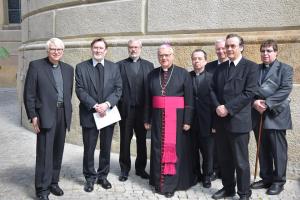 Following the appointment of Archbishop Heiner Koch (pictured at left with Berlin’s cathedral chapter) to Berlin, the other bishops of eastern Germany have expressed concern at the trend that seems to be developing, a tendency for bishops in that part of the country to be reassigned within a few years after being made ordinaries there. And they have a point.
Following the appointment of Archbishop Heiner Koch (pictured at left with Berlin’s cathedral chapter) to Berlin, the other bishops of eastern Germany have expressed concern at the trend that seems to be developing, a tendency for bishops in that part of the country to be reassigned within a few years after being made ordinaries there. And they have a point.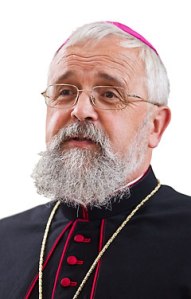 In fact, the eastern German episcopate as a whole is young. Only Magdeburg’s Gerhard Feige (pictured) has a decade as bishop behind him, and the next senior is Görlitz’s Wolfgang Ipolt, ordinary for a mere four years.
In fact, the eastern German episcopate as a whole is young. Only Magdeburg’s Gerhard Feige (pictured) has a decade as bishop behind him, and the next senior is Görlitz’s Wolfgang Ipolt, ordinary for a mere four years.
 ^ A keen photographer, Bishop Werbs is the subject of
^ A keen photographer, Bishop Werbs is the subject of  “To not be confused, remaining true to the Good News of the Lord, to hold fast to the fact that He is the way, the truth and the life for us, that is also the commandment of the day, for the present time…
“To not be confused, remaining true to the Good News of the Lord, to hold fast to the fact that He is the way, the truth and the life for us, that is also the commandment of the day, for the present time…